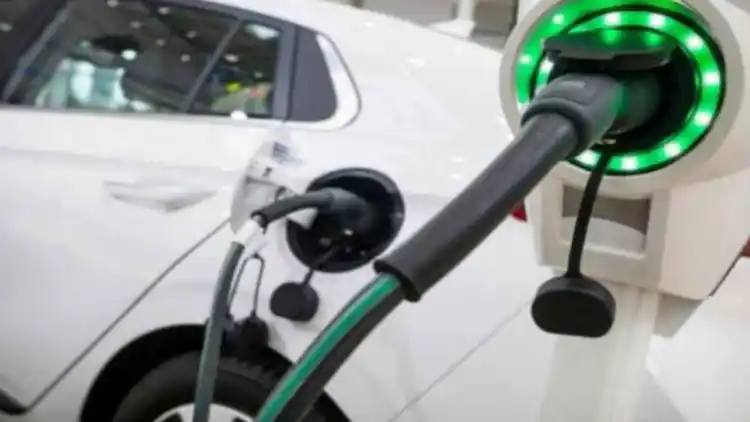- The Growing EV Movement in Saudi Arabia
- Regulatory Requirements
- Technical Requirements: What You’ll Need at Home
- Charger Types and Charging Speeds
- Fable: “The Morning That Changed Fahad’s Drive”
- The Step-by-Step Installation Process
- Smart Features of Modern Home Chargers
- Estimated Costs and Incentives
- Key Benefits of Home Charging
- Best Home Charger Brands in Saudi Arabia (2025)
- Differences Between AC and DC Chargers in Homes
- Common Mistakes to Avoid
Electric vehicles (EVs) are no longer a futuristic concept — they’ve become a present reality in Saudi Arabia, driven by the country’s Vision 2030 sustainability targets. As charging infrastructure expands across Riyadh, Jeddah, and Dammam, an increasing number of EV owners are asking the same question: Can I install a home charger in Saudi Arabia, and how difficult is it?
The short answer is: Yes, you can — provided you follow the correct technical and legal procedures. This guide explains the requirements, process, and options to safely install a home EV charger, while exploring why this small investment can completely change your EV ownership experience.

The Growing EV Movement in Saudi Arabia
Saudi cities are rapidly adopting public fast-charging networks, with over 1,000 new charging points already planned for 2025.
Home charging is becoming the preferred choice for convenience — charge overnight, wake up to 100% battery, and drive stress-free.
Major brands like Tesla, Lucid, BYD, Hyundai, MG, and Kia EV6 fully support residential charging setups approved by local authorities.
Regulatory Requirements
To install a home EV charger, homeowners must comply with the regulations set by three primary authorities:
Saudi Electricity Company (SEC)
Approval is mandatory before connecting the charger to your power supply.
SEC ensures the installation meets grid protection standards and energy efficiency codes.
Ministry of Municipal, Rural Affairs, and Housing (MOMRAH)
The ministry issues location safety clearances for residential spaces (villas, compounds, or apartments).
Saudi Standards, Metrology, and Quality Organization (SASO)
The charging unit itself must be SASO-certified to guarantee product safety and electrical reliability.
Technical Requirements: What You’ll Need at Home
To make your home EV-ready, the following steps are essential:
Electrical Load Assessment: Determine if your meter and breaker can handle the charger demand.
Circuit Upgrade: Install dedicated breakers, cables, and surge protection for the charger.
Wall or Floor Mounting: Chargers can be fit on walls or free-standing pedestals, depending on your parking setup.
Weatherproof Housing: Chargers must have IP65 or higher protection rating to resist heat and sand — vital for Saudi climate conditions.
Professional Installation: Only certified electricians (approved by SEC or licensed EV service providers) can connect the unit to your home power grid.

Charger Types and Charging Speeds
7 kW AC charger: Perfect for standard homes; fully charges in 6–8 hours.
11–22 kW AC charger: For larger residences or multiple vehicles.
All major EVs in KSA support both AC (home) and DC (public fast) charging options.
Fable: “The Morning That Changed Fahad’s Drive”
Imagine Fahad, a businessman in Riyadh who recently bought a BYD Seal. Each night, he would plan his morning routes around public chargers until he finally decided to install a home wallbox.
One Friday, he woke to a fully charged car, no queues, no waiting — just instant freedom. Within days, his electricity bill rose only slightly, but his EV ownership satisfaction doubled. Like Fahad, thousands of Saudi drivers are now realizing that convenience and sustainability start right in their driveways.
The Step-by-Step Installation Process
Consultation and Site Assessment: A certified installer evaluates your home’s readiness.
Approval & Paperwork: Apply for connection permits from SEC and upload SASO-compliant charger documents.
Upgrade and Wiring Work: Electric load balancing, dedicated circuit setup, and grounding checks.
Installation & Testing: The unit is fitted, calibrated, and connected to your power grid.
App Integration: Smart chargers can be paired with your phone for charging control, cost tracking, and scheduling during off-peak hours.
Smart Features of Modern Home Chargers
Mobile App Control: Start or stop charging remotely.
Energy Monitoring: Track electricity use and optimize costs.
Scheduling Tools: Charge during low-tariff hours.
Multi-Vehicle Support: Manage multiple EVs simultaneously in the same household.
Compatibility: Works with all EV brands certified for sale in KSA (Tesla, Lucid, Hyundai, MG, BYD, etc.).
Estimated Costs and Incentives
Installation Costs: Range between SAR 4,000–7,000 depending on charger capacity and home wiring.
Government Incentives: Several municipalities offer cost-sharing and energy subsidies for residential EV charging.
Low Maintenance: Zero fuel, no oil changes. Maintenance is largely software-based for smart wallboxes.
Key Benefits of Home Charging
Convenience: No waiting lines or dependency on public stations.
Efficiency: Charge overnight and save up to 40% on electricity versus public charging rates.
Safety: Built-in overcurrent and thermal protection systems.
Property Value: Adds resale value to modern villas and apartments.
Eco-Friendly: Reduces carbon footprint and supports Saudi Arabia’s net-zero emission goals.
Best Home Charger Brands in Saudi Arabia (2025)
Differences Between AC and DC Chargers in Homes
Common Mistakes to Avoid
Installing uncertified or non-SASO-approved chargers.
Using general electricians instead of certified EV experts.
Ignoring proper grounding and surge protection.
Placing chargers in direct sunlight without shade or cover.
Installing a home EV charger in Saudi Arabia is not just an upgrade — it’s a lifestyle evolution. It ensures energy independence, simplifies your driving experience, and supports the Kingdom’s broader clean energy vision. With the right certified installer and compliance with SEC and SASO guidelines, your driveway can become your personal power station — efficient, safe, and ready for the future of mobility.













